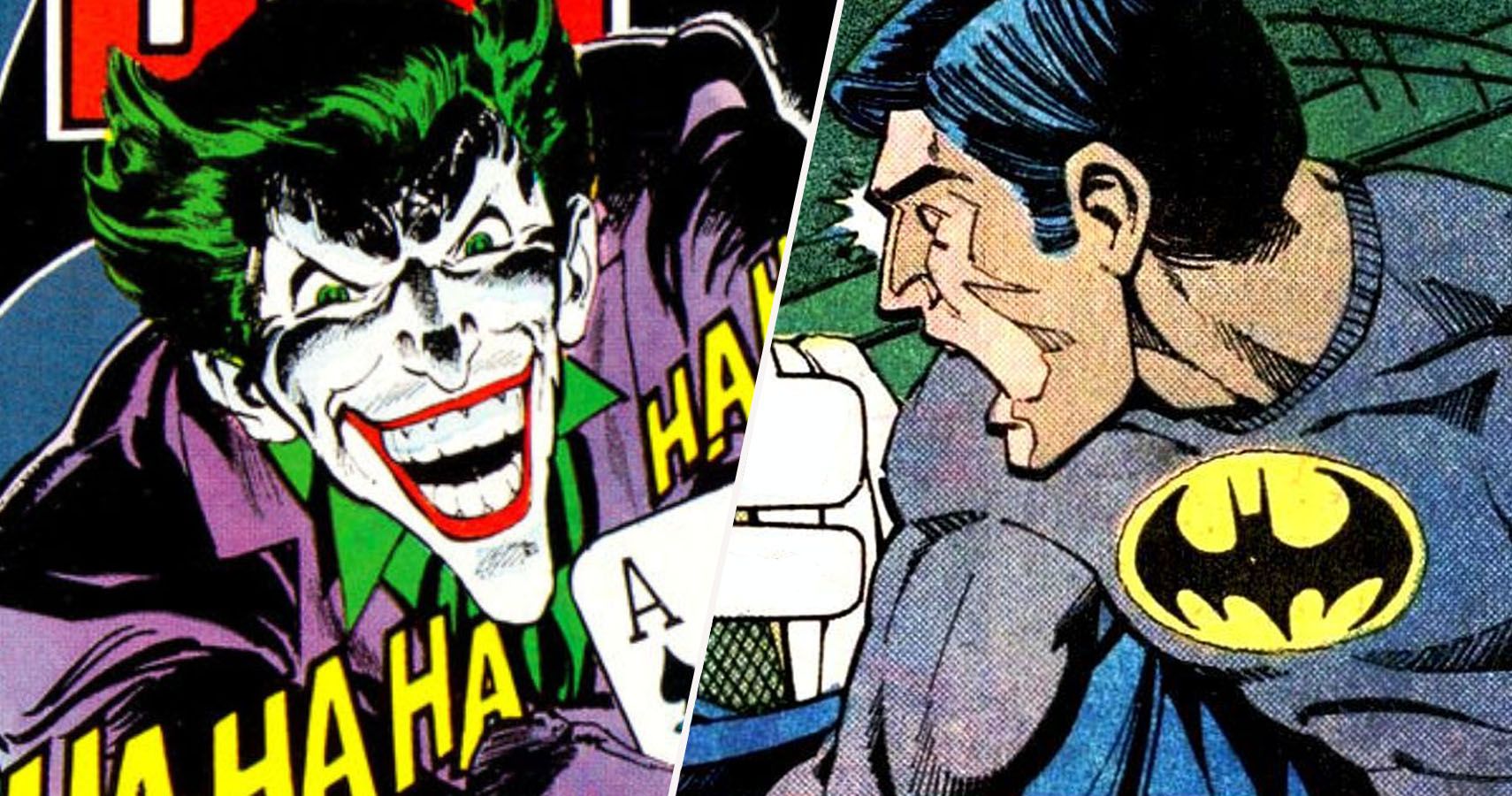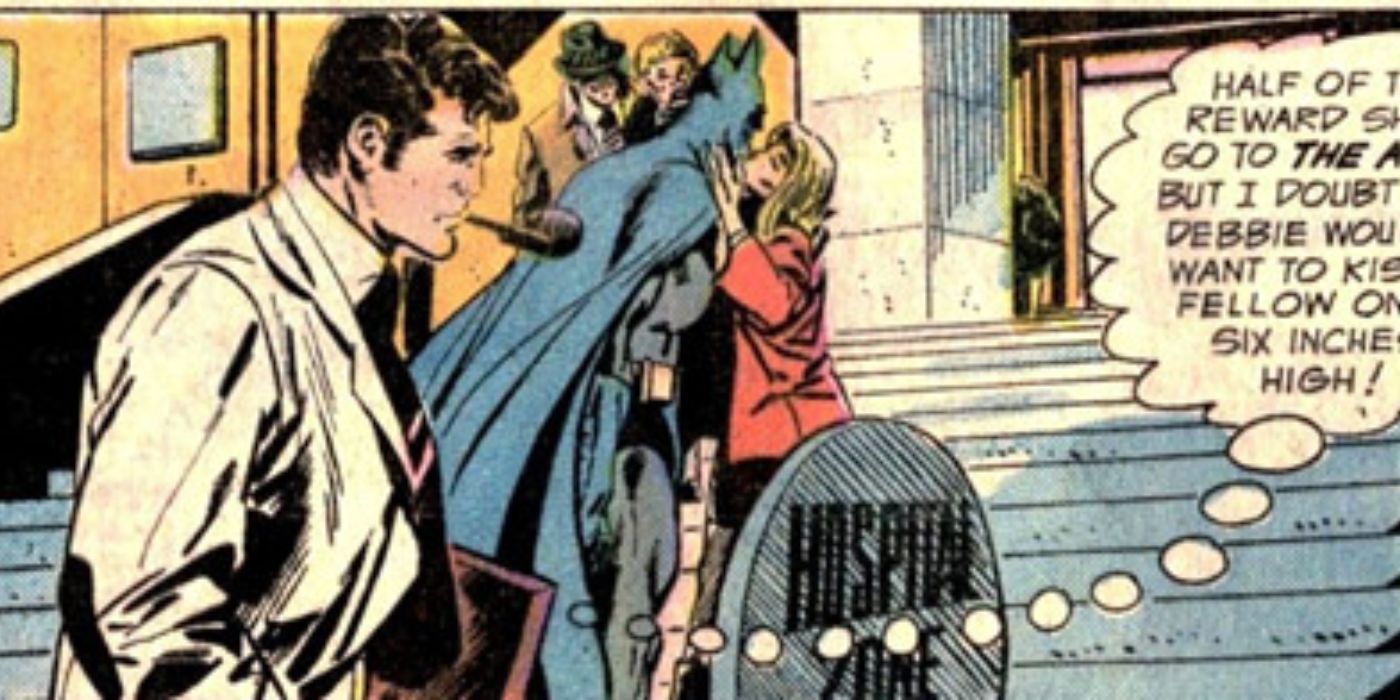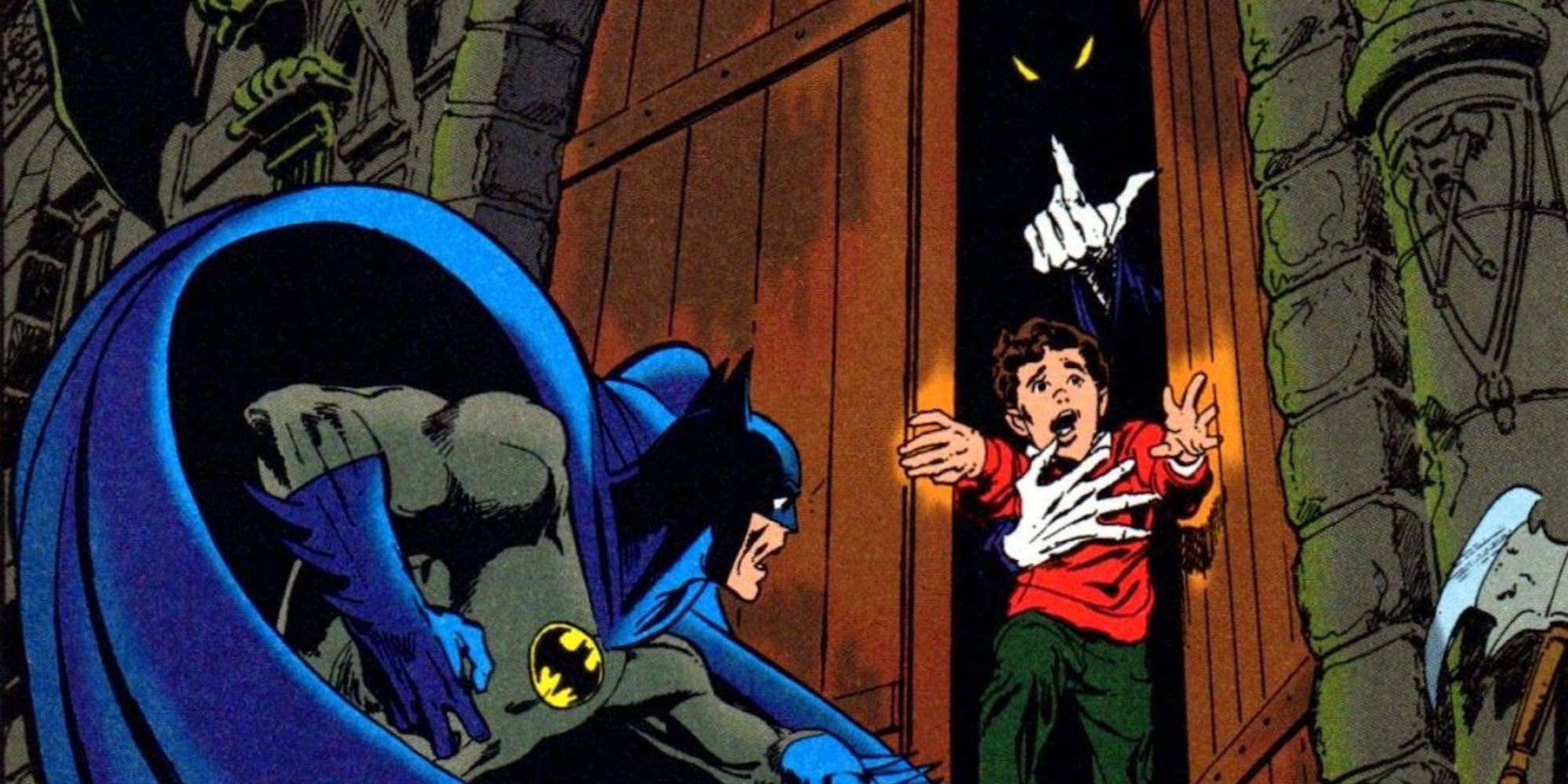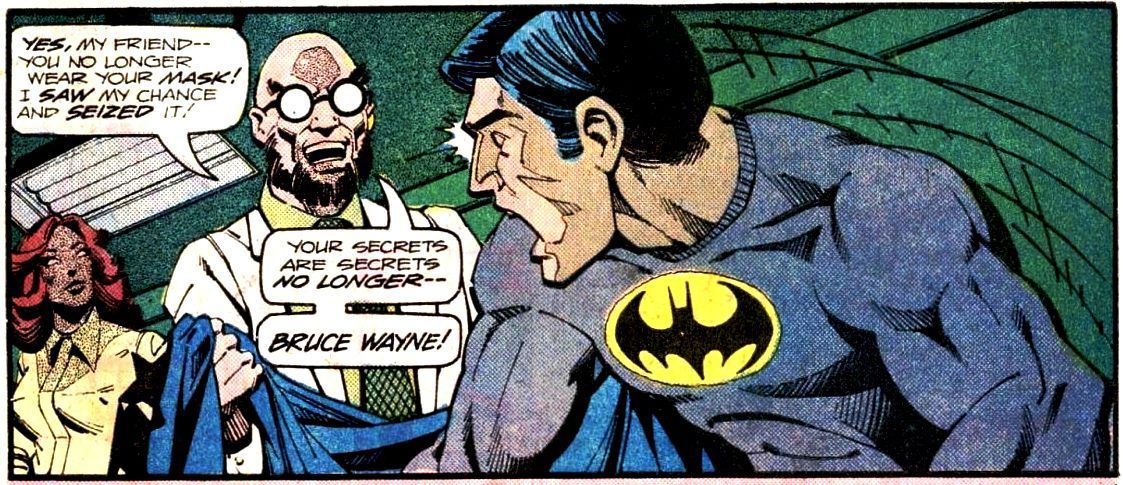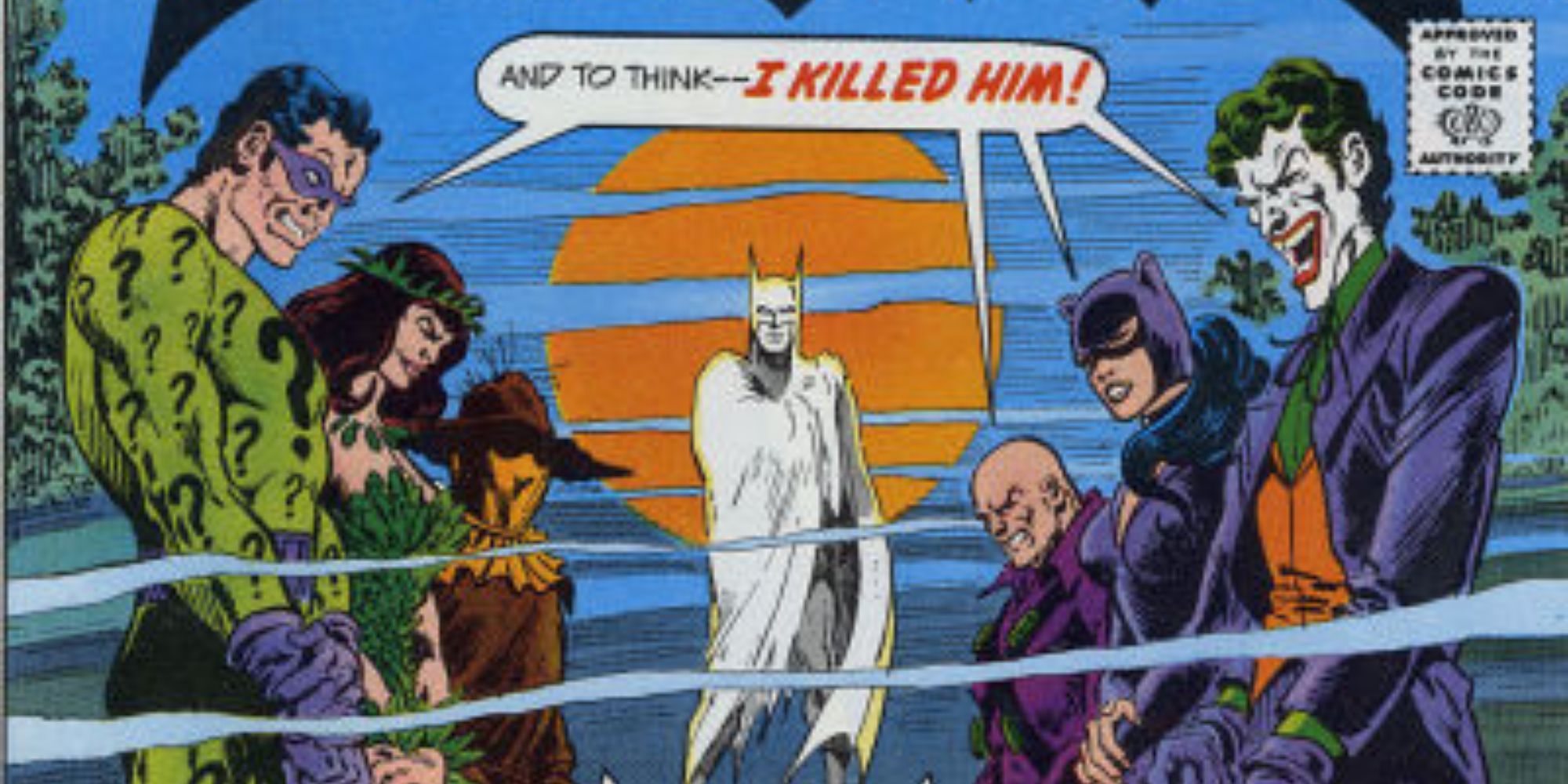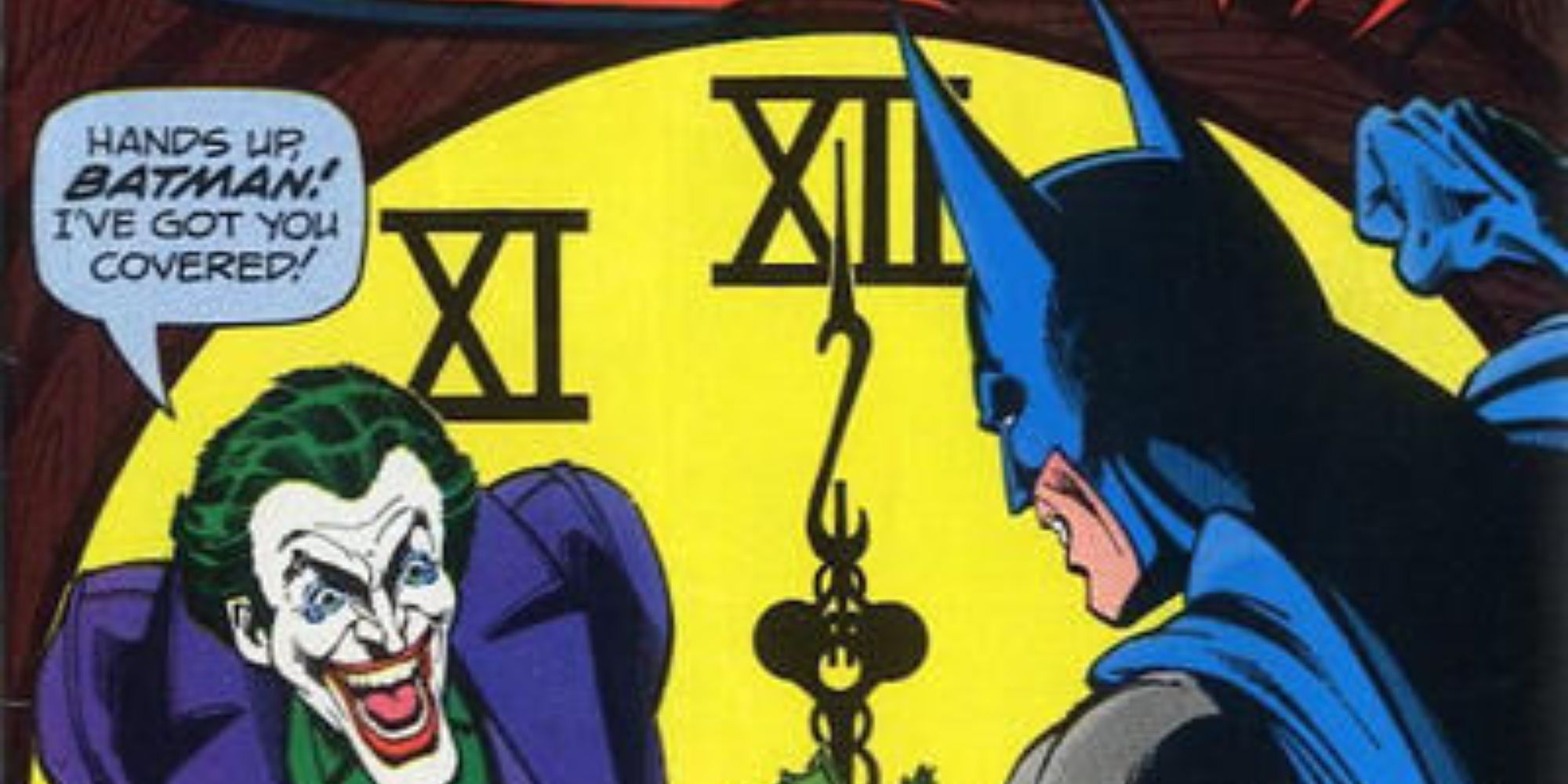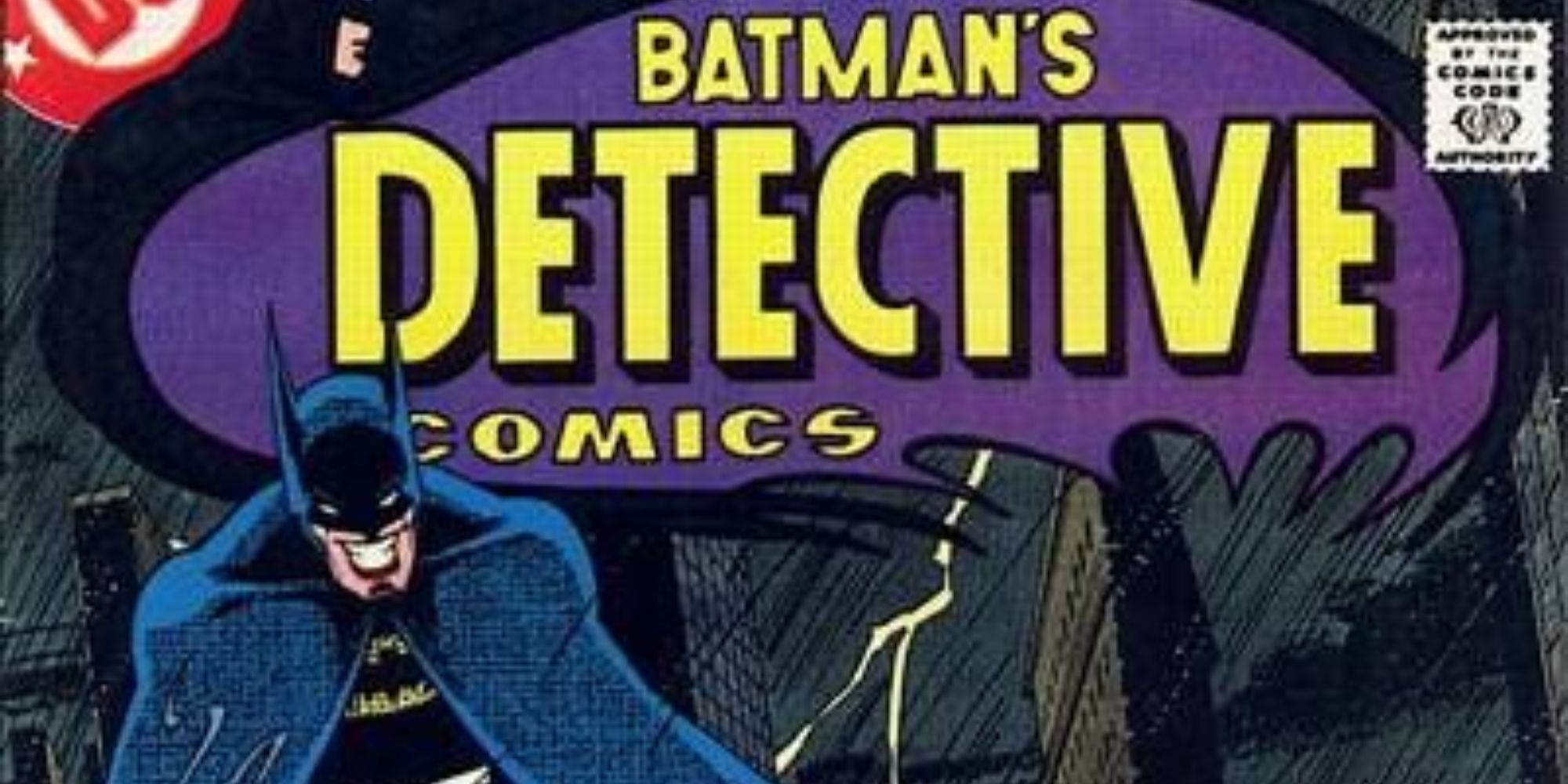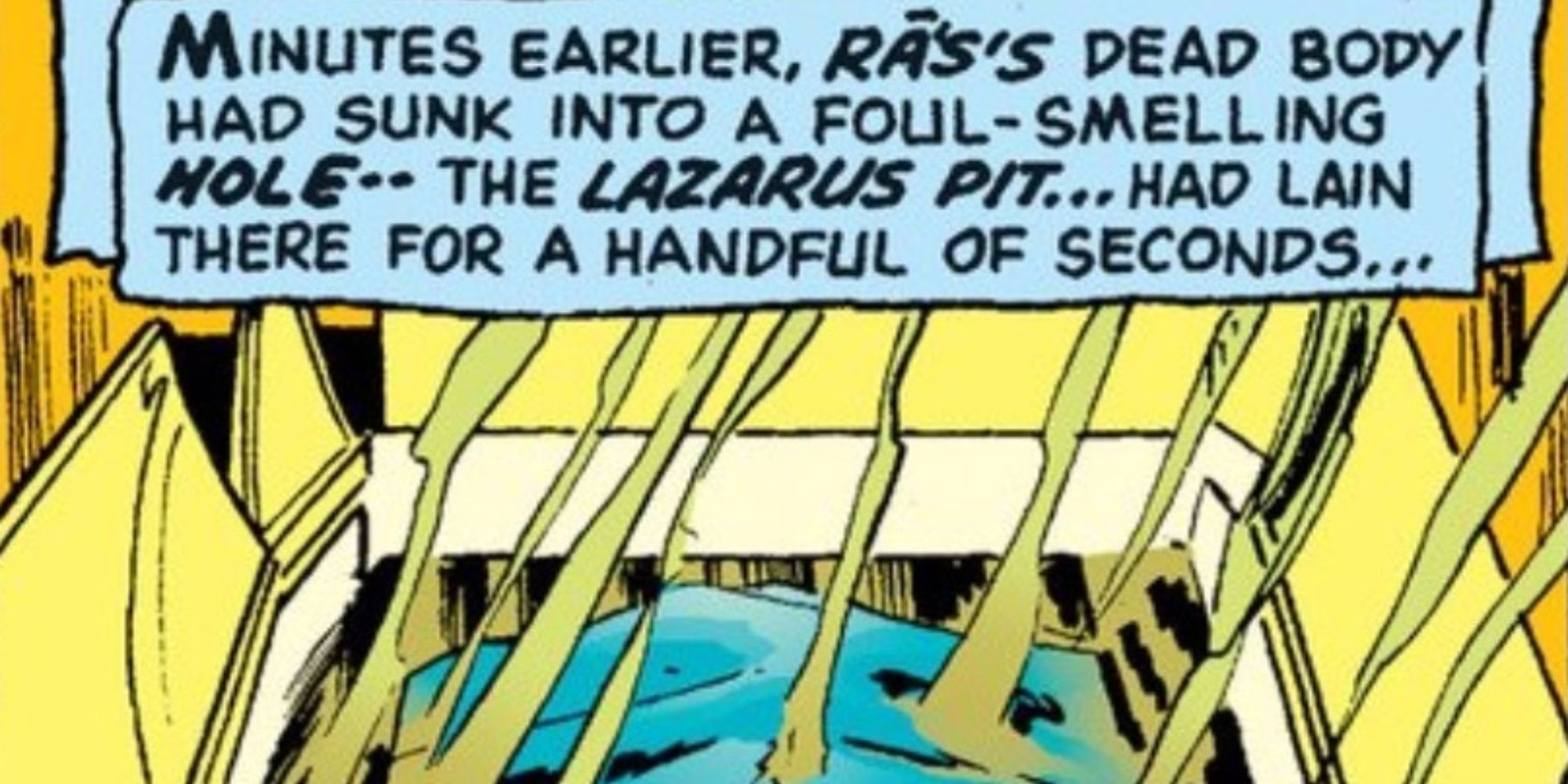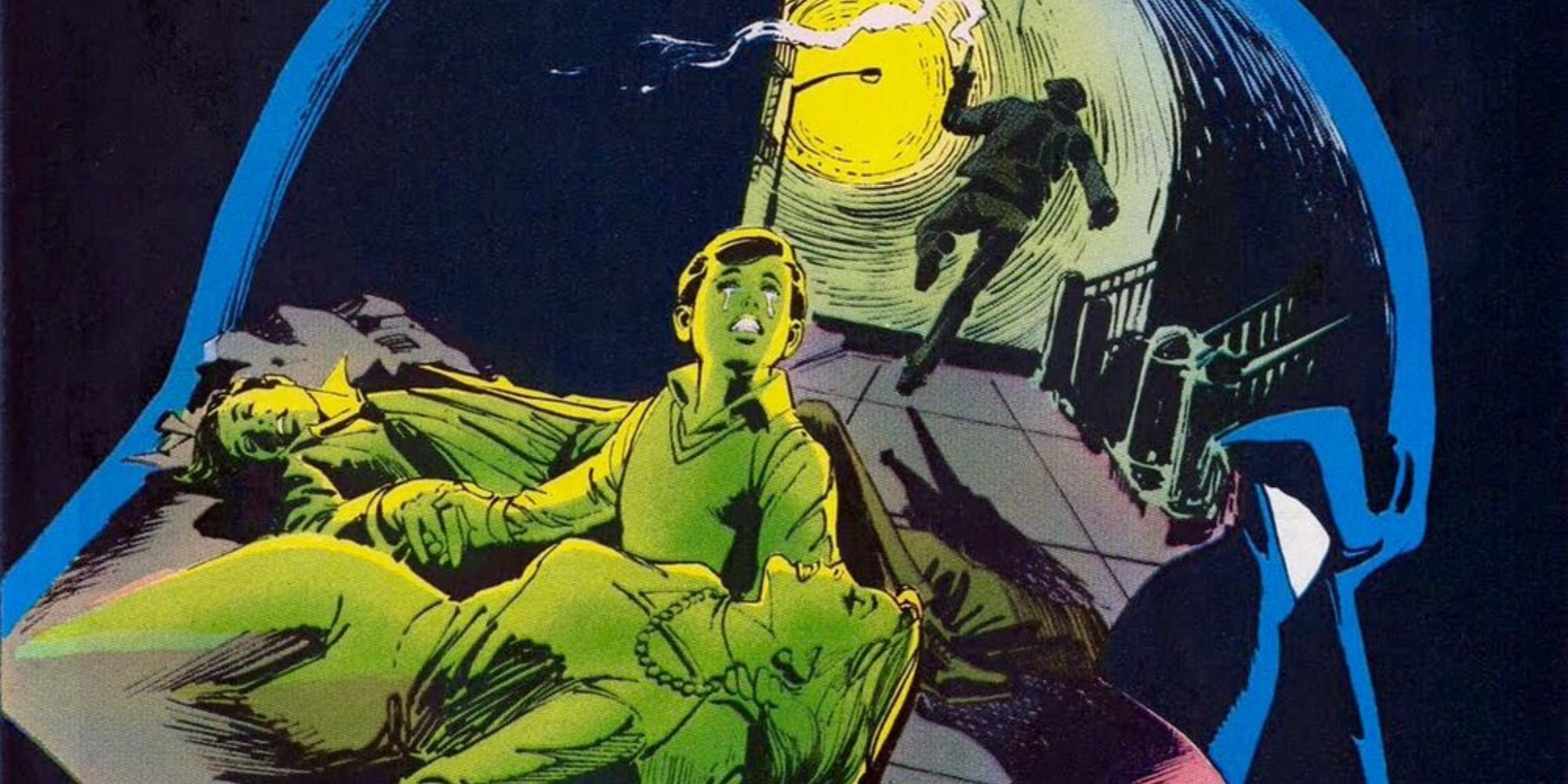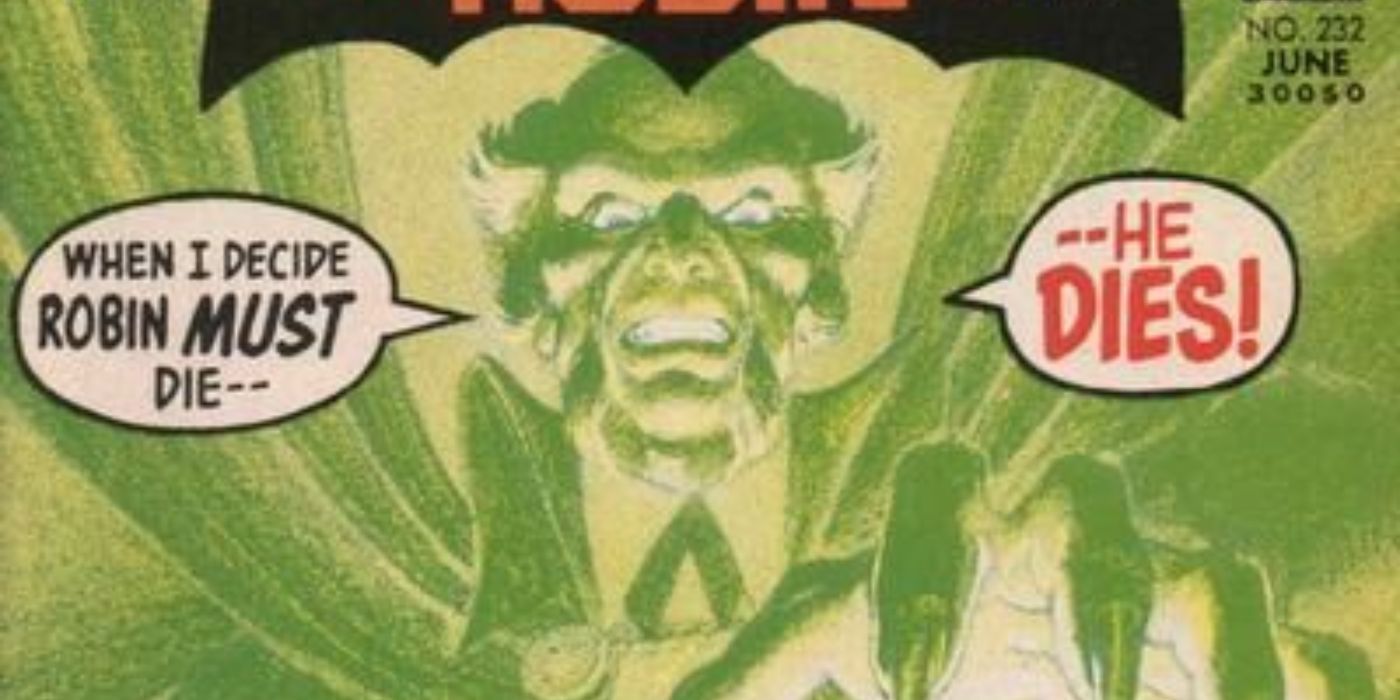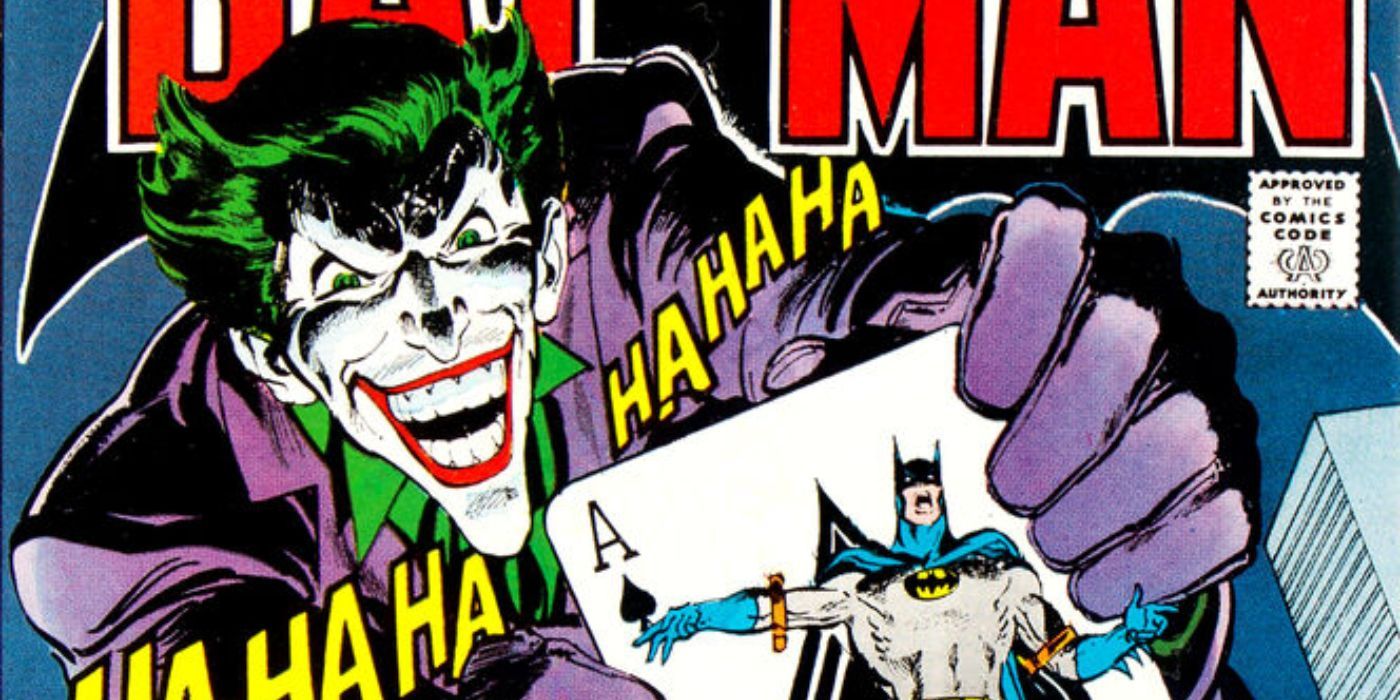There have been many incarnations of Batman throughout the years. The character first appeared in Detective Comics #27 in May of 1939, and the 60's saw a very goofy yet groovy Batman appear with Adam West and Burt Ward's hit series. However, the 1970's laid a lot of the groundwork for a new era that fans came to appreciate.
The 70's started returning to the underlying darkness that followed the brooding and traumatized hero who started his quest after his parents were murdered in Crime Alley. The dynamic duo of Dennis O'Neil and Neal Adams brought readers Ra's Al Ghul, Arkham Asylum, and a version of Joker way more unnerving than the flamboyant Cesar Romero. It's worth reflecting on the era that brought Bat comics in the direction modern readers fell in love with.
10 The Corpse That Wouldn't Die
The team up of Batman and Atom is a underrated story from the 70's. Ray Palmer does most of the heavy lifting in The Corpse That Wouldn't Die while Batman is trying to find a local woman who is kidnapped by a mafia like gang after witnessing a crime. Batman gets electrocuted attempting to break into the gang's hideout and is rushed to the hospital on life support, where the doctors believe he will die.
Ray Palmer shrinks into The Atom and controls Batman's brain to revive the body, rescue the girl, and essentially revitalize his organs to save his life. Not only is this story underrated, but the rescued girl gives Batman all the credit even though Ray really saved the day.
9 Red Water, Crimson Death
Bat-Fans love this issue of The Brave and The Bold because of the creepy, horror movie vibe the comic carried with it. Batman is ordered to take a vacation by Commissioner Gordon and Bruce decides to take a cruise when he happens upon rescuing a young orphan boy.
The boy lives on an Island where the legend of the Red Sea purports that many have died because of it. Many on the Island believe in ghostly superstitions, but Batman finds out that a shady businessman has been behind it all along. It's a great story that's haunting yet also has a very Scooby Doo-ish ending.
8 The Dead Yet Live
Hugo Strange makes strange and sinister waves in Bruce Wayne's life with this devilish attack on Batman. Bruce believes he's receiving special medical treatment at a private establishment after being exposed to radiation. Instead, Bruce is drugged and locked in a room, only to escape as he naturally had an extra Batman suit with him.
Once Bruce escapes and confronts Hugo, a snake bites Batman which puts him to sleep. Once Batman wakes up, Hugo revealed that he unmasked Bruce. Hugo Strange's appearance is noteworthy, as well as the compromising of Batman's identity.
7 Where Were You On The Night Batman Was Killed?
Rumors of Batman's death spread throughout Gotham and the who's who of Gotham's criminals hold a trial to see who can claim credit for the accomplishment. Ra's Al Ghul is the Judge, Harvey Dent prosecutes the trial, and the Jury is made up of villains such as Poison Ivy and Scarecrow.
Catwoman, The Riddler, Lex Luthor, and The Joker all testify to take credit, but Batman was alive and actually disguised himself as Dent to find the killer of a man dressed as Batman. It's a perfect showcase of villains and the cover of Batman Vol 1 #291 is iconic.
6 The Laughing Fish
The Laughing Fish shows the Joker in classic form. While Batman is patrolling Gotham's docks, he noticed that fisherman caught fish that have a grim smile to them. The Joker attempts to patent his poisoned fish at the patent office, but the clerk denies it – causing the Joker to commit murderous acts. This story continues to grow Joker's trademark murderous laughing gas that he would use to terrorize Gotham while balancing out the clown at his most cartoonish.
5 The Sign Of The Joker
What's important to note is that The Sign of the Joker and The Laughing Fish had a big influence on Batman: The Animated Series, the latter inspiring an acclaimed episode of the same name.
The Joker continues to ravage Gotham with his chemical attacks and sick games, while Commissioner Gordon and Batman strive to finally stop him and his noxious laughing gas. This issue is significant because it also has Silver St. Cloud, one of Bruce's closest relationships, break up with Batman after she realizes she can't risk seeing him hurt.
4 The Lazarus Pit
Ra's appearance in the 70's is a huge milestone for the comics. A crucial aspect that Ra's Al Ghul introduced into Batman lore is the appearance of the Lazarus Pit. The pit is a super natural phenomenon in the DC universe known to restore lives that are on the brink of death. This is discovered after Batman tracks down Ra's Al Ghul's to his lair only to find him dead. Talia, who already started some romantic tension with Batman, decides to show him the green foul smelling pool that would bring Ra's back to life. The Lazarus Pit is a game changer in Batman mythology.
3 There Is No Hope In Crime Alley!
While Neal Adams is an undisputed king in 70's era Batman art, Dick Giordano shines in this fantastic look back at Batman's gruesome origin story. Batman routinely visits Crime Alley to remind himself of who he is. Batman saves Leslie Tompkins, a Gotham resident, from a mugging as he relives the traumatizing murder of his parents.
It's revealed that Leslie Tompkins witnessed the murder of the Waynes and was there to help young Bruce. Batman asks Leslie why she doesn't move from Crime Alley and she reveals that the murder made her stay in hopes of preventing another tragedy. There is No Hope in Crime Alley! is a fantastic retelling of Batman's origin story and an introduction to Gotham's unsung hero, Mrs. Tompkins.
2 Daughter Of The Demon
Ra's' show stealing issue is up there as one of the best Batman stories. Daughter of the Demon debuts a villain whose storyline would be the catalyst for many modern Batman arc. Daughter of the Demon, which reappears in similar fashion in BTAS, finds Robin kidnapped. Ra's Al Ghul approaches Batman stating that Talia has also been kidnapped, believing it to be the same culprit who snatched Robin.
Ra's asks Bruce to help find the kidnapper, when in reality Ra's is putting testing him to see if he's worthy to be Ra's' successor. Ra's Al Ghul and his daughter Talia appear in everything from the Dark Knight Trilogy to Son Of Batman, and it's due to this quintessential issue brought about by Dennis O'Neil and Neal Adams.
1 The Joker's Five-Way Revenge
Besides Ra's appearance, The Joker's Five-Way Revenge sets Batman and his arch-nemesis the Joker on the course fans know today. The Joker escaped from a mental hospital (later known as Arkham Asylum) to exact revenge on five gang members he believed would testify against him. The Joker killed them one by one with his signature vicious yet clownish acts.
It can't be understated how important this story was in changing the course of The Joker. The Joker's Five-Way Revenge brought the transition of the Clown Prince of Crime from a goofy Cesar Romero prankster to Heath Ledger's deeply depraved psychopath readers have continued to be fascinated by.

